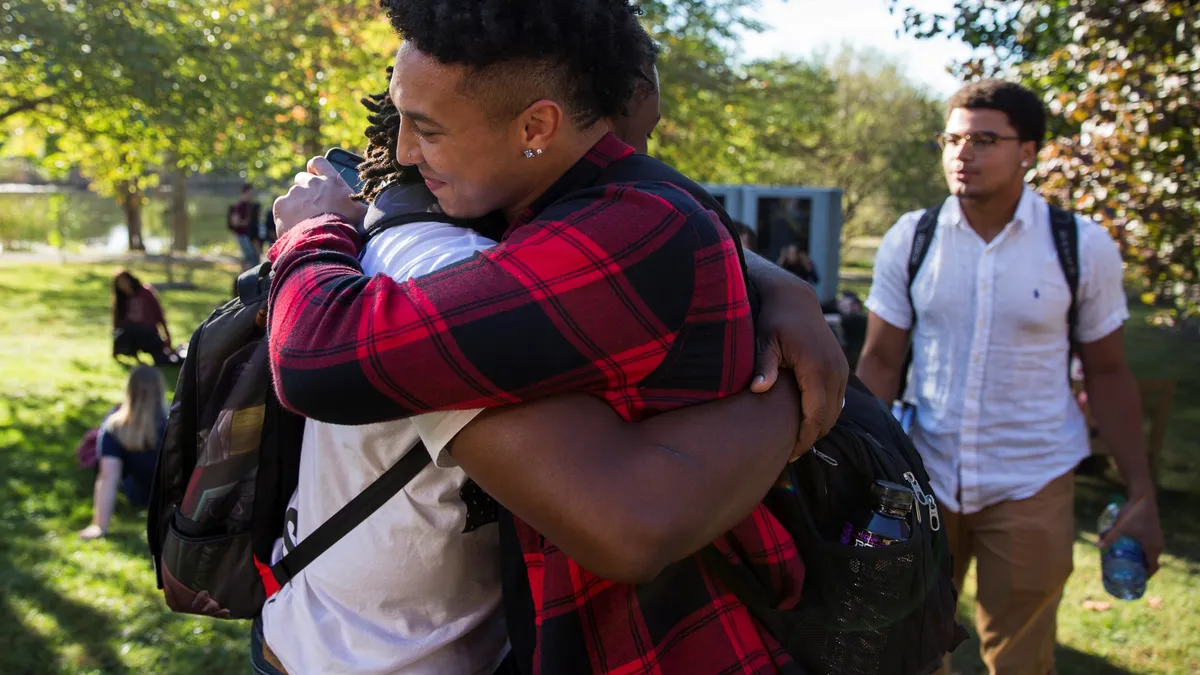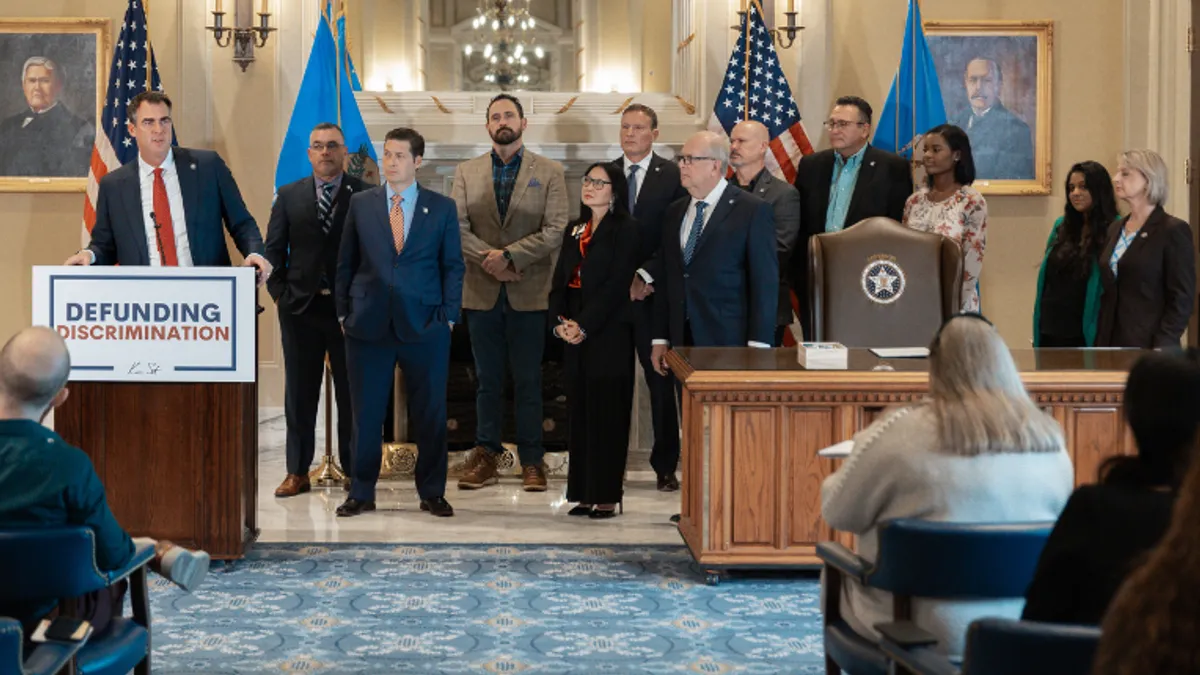Marvin Krislov is the president of Pace University, in New York.
When I decided to come to Pace University two years ago, I came because of the students. I'd visited the campuses, walked the halls, and met the hard-working, ambitious doers and strivers who make up — and who have always made up — Pace's student body.
For more than a century, Pace has provided a quality education and career path to those who are driven and willing to work hard. We've educated immigrants and their children, first-generation students, adult learners, people from every imaginable cultural, ethnic and socioeconomic background.
And over that time, two things have remained constant:
- Our students don't take educational opportunities for granted.
- Our students know that a college education can transform their lives — and, by extension, their families and even their communities.
That's why we work so hard to attract, enroll and retain a diverse group of students, many of whom lack the resources or support to help them get to college.
But we get them here: Each year, about half of our incoming class is from underrepresented groups. Nearly half are first-generation. And over a third are Pell-eligible.
We are meeting students as they are and where they are and taking them to where they want to be. This commitment contributes to Pace's position as the top four-year, private nonprofit college in the country for upward economic mobility, according to [a list compiled by The Chronicle of Higher Education based on data from] the Opportunity Insights research project at Harvard University.
Our strategy, rooted in Pace's mission, has three main pillars.
Removing barriers
The college application and enrollment process are littered with hurdles. Students who lack financial resources or access to guidance — even the best, hardest-working ones — can struggle to navigate and clear all of them.
Marvin Krislov is the president of Pace University.
At Pace, we don't look at a student or family's income when we make our admissions decisions. We're not always able to meet full need, but we work hard to help admitted students find a way to make it work. Our financial literacy counselors stay involved with students and families from application through enrollment, so they understand the four-year cost of college, find resources to help them pay for it and emerge as debt-free as possible. We have a growing team of bilingual counselors to ease communication with families.
Enrolled students are then put on the Pace Path, our signature education model integrating curricula with practical experiences like internships and research. It's all organized in a personalized plan to keep students on track to graduate in four years, fully prepared for a great first job and a great career.
Building a pipeline
Students from families or communities that haven't traditionally sent students to college are at a profound disadvantage in the application process because they have few seasoned guides to its complexities. We try to build bridges to help such students find their way to Pace.
Our admissions staff goes on more than 800 high school visits each year, making a concerted effort to engage schools in underrepresented communities. When we find schools that regularly produce Pace students, we deepen those relationships to broaden and increase the pool of applicants, expanding opportunity among demographics that need it most. We also run workshops on financial aid and admissions in our lower Manhattan community, helping students and families understand the process.
We work with college access groups, programs that provide coaching and resources to students who need them. One example of these is Latino U College Access, founded by Pace alumna Shirley Acevedo Buontempo, who developed the plan when she returned to Pace for her master's of public administration. She realized that low-income, first-generation Latino students lacked advantages her daughter had as the child of two successful college graduates. We're proud to work with Shirley's program and others like it.
Expanding the pool
Colleges and universities need to welcome people different from those who fit a traditional "college student" mold.
We're building dual-admission programs with area community colleges, so students have a path toward a bachelor's degree. Community college students frequently use up too much Pell Grant eligibility before getting to a four-year college. With dual admission, students plan an academic program long before arriving at Pace. By earning the right credits in community college, they're positioned to get that bachelor's degree on time and to use aid efficiently.
Student veterans are a priority at Pace. We have two Veteran Services officers — who are veterans themselves — dedicated to supporting our student veterans from application through their experiences as enrolled students. In our Military Mondays program, we're prepared during application periods to admit veterans on the spot, so long as their materials are in order. We also help student veterans secure financial support, including offering unlimited Yellow Ribbon benefits to Iraq and Afghanistan vets.
We don't forget the career outcomes veterans seek. Our Veterans Career Fair last spring attracted 35 employers — all the room could hold, with a long waitlist for spots — and served students from Pace and area colleges.
Finally, we're overhauling our online offerings. Many students, particularly graduate students, have career and family commitments, so they need classes and programs that work on their schedules. We've offered online education for many years, but we're redoubling our efforts, with 17 programs in development to launch or re-launch over the next several semesters.
At Pace, we're determined to give a great education to everyone who wants it, no matter who they are — or where they are. It's hard work, but it's worth it, for our students, for Pace and for society.

















